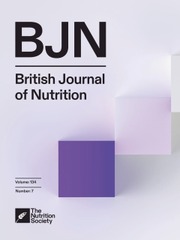No CrossRef data available.
Article contents
Quantification of vitamin K (phylloquinone and menaquinones 4-10) in various shellfish
Published online by Cambridge University Press: 13 February 2025
Abstract
Vitamin K exists naturally in foods as phylloquinone (vitamin K1, PK) and as a range of menaquinones (vitamin K2, MKs). There is scarce information on the occurrence and distribution of PK and MKs in dietary sources, particularly in seafood. This study aimed to comprehensively analyse the contents of vitamin K1, dihydro-K1, and MK-4 to MK-10 in various species, tissue types, and processing degrees of shellfish. Additionally, seasonal differences in the vitamin K content of blue mussels (Mytilus edulis) were explored. Most shellfish products had low contents of total vitamin K (<10 µg/100 g). The highest content of total vitamin K was found in the hepatopancreas of snow crab (170 µg/100 g), the brown meat of brown crab (35 µg/100 g), pre-packaged blue mussels (20 µg/100 g), stuffed brown crab shells (15 µg/100 g), and blue mussels in brine (12 µg/100 g). In general, the hepatopancreas of crustaceans contained considerably higher contents of vitamin K than their white meat counterparts. MKs contributed most to total vitamin K contents, whereas most shellfish products contained low contents of PK, thus making only a minor contribution to the adequate intake (AI) established for adults. No statistically significant differences were observed in PK and MK contents of blue mussels sampled during spring versus late summer (p < 0.005). Nevertheless, a non-significant trend of increasing vitamin K content was observed towards the autumn months. This study presents novel vitamin K data for shellfish, an unexplored food group, and adds to the scarce vitamin K composition data worldwide.
- Type
- Research Article
- Information
- Copyright
- The Author(s), 2025. Published by Cambridge University Press on behalf of The Nutrition Society


